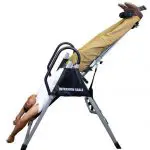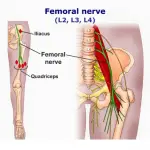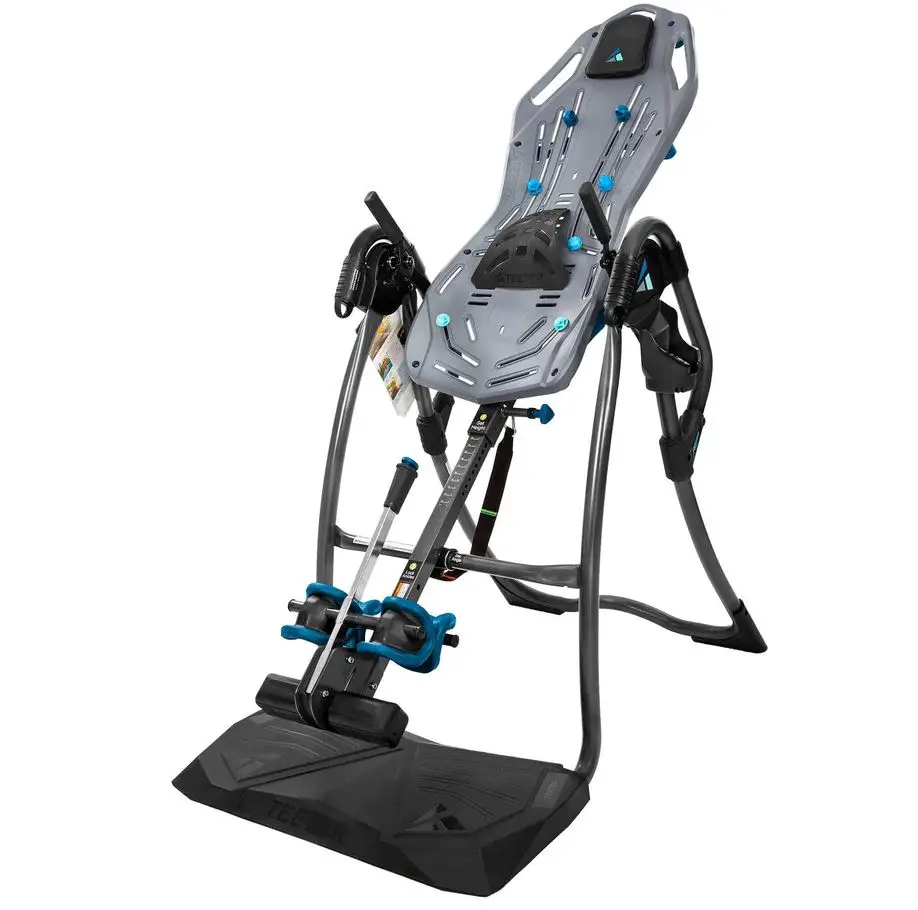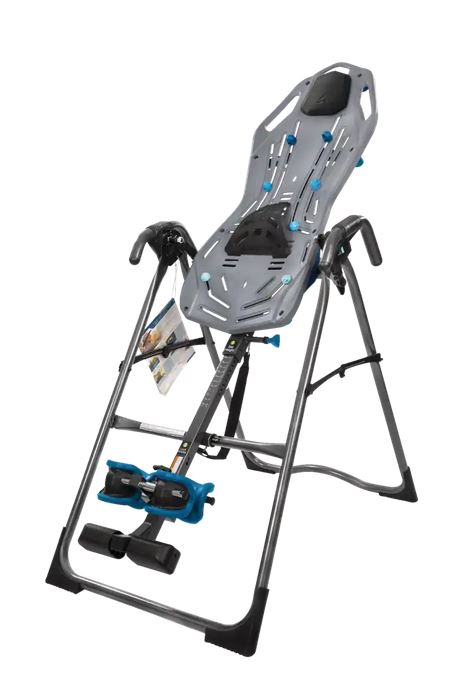Spondylolisthesis is a spine problem affecting every one of all genders. This condition varies from a mere tingling to a more profound and crippling issue, compromising your structural stability. However, some people don’t notice it, making it worse with time if treatment isn’t early. Spondylolisthesis pain usually becomes more apparent when a vertebra slides and protrudes far against the lower ones. And one seemingly ideal way to deal with it is relieving traction on the spine using inversion tables. But does the inversion table work for spondylolisthesis?
Inversion tables can work for spondylolisthesis pain relief but may require surgery if the condition is severe. As much as you can use this conservative treatment, it requires utmost caution since it could exacerbate your situation. Most doctors and spine chiropractic centers are against using inversion tables for spondylolisthesis, especially without supervision. However, you can use them once you have the green light and the correct acquaintance from your health provider.
This article offers insight into how inversion tables can help with spondylolisthesis and how you can use them safely.
How Do Inversion Tables Help with Spondylolisthesis?
Inversion tables help relieve spinal pressure by reclining patients at specific angles tailored to their treatment needs. This action stretches the soft tissue and muscle around the spine, lessening the impact of gravity on the discs and nerves. Remember, pressure due to the upper body weight settles on the lower back and distorts the spine. When you’re lucky, the impact wouldn’t be incredibly severe but can worsen with time, leading to numerous structural issues, including spondylolisthesis.
The gravity impact may pull one of your vertebrae out of position, causing it to slide against the lower one and stretching the intervertebral disk. That causes nagging pain that seems to be getting worse with time. However, once gravity lessens after inversion, it induces temporary relief that may become more permanent in the long term. Before subscribing to using an inversion table for spondylolisthesis, please get your doctor to do a CT scan, X-ray, or MRI to ascertain the depth of the problem.
How to Use Inversion Tables for Spondylolisthesis
Using inversion tables for treating spondylolisthesis isn’t varied as with other back pain issues. However, getting a doctor’s two cents is best to be more confident of the condition’s severity. That’ll offer you a guide to approach the treatment safely and efficiently. But please don’t use this treatment if you have other underlying health issues mentioned in this article.
You don’t have to recline at a full angle, so your heart is vertical above your head. Instead, a 45-degree recline angle for a minute or two every day can be sufficient. You may repeat these reclines up to five times daily, but be sure to quit if you feel odd. Sometimes, complete reclines can make you dizzy since it interrupts blood flow. Therefore, always listen to how your body responds and have someone lend you a hand if you aren’t well-versed in using inversion tables.
Who Can Use the Inversion Table for Spondylolisthesis?
People with a history of multiple stroke encounters, inguinal hernia, heart disease, glaucoma, or high blood pressure should avoid using the inversion table. Besides, alternative treatment exercises like planks and bridges can be more viable if you have a knee or hip issue, osteoporosis, or are pregnant. Weight-reducing exercises can still help reduce your body mass and lift the pressure off your lower back, lessening traction.

Not everyone with spondylolisthesis is fit enough to use the inversion table since it can exacerbate the condition. Sometimes, this condition doesn’t manifest as severe back pain and can be dismissible. Therefore, a proper diagnosis to assess the severity helps guide you through this conservative and less invasive treatment. People with isthmic spondylolisthesis are more entitled to using inversion tables since it doesn’t predispose them to further harm. However, degenerative and traumatic spondylolisthesis patients should always seek advice from health experts to ascertain suitability.
How Long Does the Inversion Table Take to Work for Spondylolisthesis?
Inversion tables usually offer instant and short-lived relief, and the pain usually comes back moments after the treatment. Also, note that this treatment works best in less severe cases and can sometimes offer permanent pain relief, although it may take some time. As you recline on the inversion table more frequently, it pops back your vertebrae, aligning them with the rest. That could take weeks before you get the pain off your lower back.
Do Inversion Tables Help Cure Spondylolisthesis Permanently?
According to observations, non-surgical treatments, including inversion tables, don’t cure spondylolisthesis or offer a more permanent solution. Instead, they only help with the pain, relieving pressure and traction on the disks and vertebrae. Some patients use this treatment for relief alone and follow it with surgery for permanent healing. And since surgery can be intrusive and costly, it’s a go-to option to alleviate the misery, considering the eligibility to recline without impacting the general health safely.
Safety Concerns When Using Inversion for Spondylolisthesis
You must understand how to safely use inversion tables when treating spondylolisthesis since a tiny mistake can prove costly. Therefore, always ensure that you fasten your ankles and that the grips are sturdy enough before reclining. Also, use the most suitable angles since spondylolisthesis is an incredibly sensitive condition that needs utmost care. As mentioned, it’s always good to seek professional advice since it’s not recommendable to subscribe to this treatment without the correct acquaintance.
Above all, ensure that your inversion table is FDA-approved and has a third-party certification from Underwriter Laboratories (UL). Please don’t forget to check the weight and height specifications to prevent discomfort or further injury to your spine. Safety should always be your priority since spondylolisthesis is incredibly sensitive and needs handling in an equal magnitude.
Conclusion
Inversion tables work for spondylolisthesis, mainly relieving pain and occasionally offering a permanent reprieve. However, it doesn’t correct defects, including cracks or extreme vertebral slips, and surgery is usually a more viable solution. This treatment usually helps patients with less severe spondylolisthesis, alleviating their pain. If you’re considering subscribing to spondylolisthesis treatments using inversion tables, please consult your health provider before fully committing to it for your safety.





